- Home
- Conn Iggulden
The Dangerous Book of Heroes Page 8
The Dangerous Book of Heroes Read online
Page 8
On the night of the twenty-fourth, during a 170-bomber raid against the Thames Haven oil tanks, a German aircraft dropped its bombs on the center of London, apparently because of a navigational error. Already bombs had been dropped around the capital and in the suburbs as well as other British cities and ports, but never before on the center of London. Similarly, no raids had been made against Berlin by Bomber Command, which itself was beginning strategic night-bombing.
Churchill naturally assumed it was intentional and, as in May when Rotterdam was blitzed by the Luftwaffe, ordered a retaliatory raid. The target was Berlin, which Göring had boasted would never be bombed.
On the very next night, August 25, Bomber Command sent 81 twin-engine bombers to Berlin. Of those, 29 reached the target and dropped their bombs on the city. Enraged, Hitler pledged to annihilate London. He ordered Göring to commence the wholesale bombing of London and other British cities by day and night, a destruction he hoped would bring Britain to demoralized defeat. So began “the Blitz,” which Hitler called “terror raids.” The first city to catch it badly was Liverpool, bombed four nights in succession.
On August 30 a feint by the Luftwaffe to the Thames estuary was followed by repeated and heavy raids on airfields. Fighter Command destroyed 49 German aircraft for the loss of 25 fighters and 10 pilots, but its southeastern airfields were a mess. A shop in the village became the operation room for Biggin Hill, yet Fighter Command still flew 1,000 sorties for the first time.
The next day the Luftwaffe struck again, bombing airfields and radar stations. It lost 39 aircraft, but Fighter Command also lost 39 fighters and 13 pilots. Several squadrons were forced to relocate to the grass fields of private flying clubs. Dowding told Churchill: “We are fighting for survival, and we are losing.”
To a major extent, both air forces were boxing blind, not knowing how much damage they were inflicting on the other. Fighter Command had destroyed 800 Luftwaffe aircraft but thought that they’d destroyed more. The error didn’t matter, for while the Luftwaffe continued its assaults across the channel, they had to be countered. On the other side of the coin, between August 24 and September 5 the Luftwaffe destroyed 466 RAF fighters, killed 231 pilots, damaged several radar stations, and put 6 fighter airfields out of action. German intelligence reported that Fighter Command was on its knees. Yet somehow Hurricanes and Spitfires rose from the green fields to meet every attack.
Dowding could no longer rotate his squadrons—there weren’t enough left—so resorted to A, B, and C designations. A squadrons were in the southeast front line commanded by Keith Park, B squadrons were in the center and west of Britain commanded by Leigh-Mallory, and C were as far from the fighting as possible, training new pilots. In those appalling two weeks to September 5 Dowding lost a quarter of his remaining fighter pilots. With the best will in the world, their replacements were rookies with only a few flying hours—often as little as ten—in their logbooks and under two weeks’ squadron experience. Their survival in battle was numbered in just days.
There were instances of Luftwaffe pilots machine-gunning RAF pilots in parachutes. There were also isolated incidents of the machine-gunning of British civilians, as earlier machine-gunning of civilians on the Continent had been common. Göring was a fighter ace from World War I, but he was also the creator of the German secret police, the Gestapo.
In September 1940, Göring announced on radio: “I myself have taken command of the Luftwaffe’s battle for Britain.” The two air forces were now trading punches, losing as many of their own aircraft as they destroyed of the other, the Luftwaffe flying about 770 sorties a day and Fighter Command just under 1,000. On one horrific day, for the first time, Fighter Command lost more aircraft—and pilots—than it shot down.
September 7 began as usual with Luftwaffe attacks on airfields, but on this occasion it was a feint for the first mass attacks on London. In the afternoon, 1,000 aircraft crossed the English Channel from France in a formation two miles high, flying over Cape Blanc-Nez and a watching Göring below. No intelligence reports suggested such a raid was planned. The controllers expected further attacks upon their airfields and so delayed the fighters from taking off until the last moment, too late for London.
There had never been an attack on a city on that scale before, anywhere in the world. The bombings of Guernica, Warsaw, and Rotterdam paled into insignificance. From 16,000 to 20,000 feet, new high-explosive bombs and incendiaries hammered the London docks and homes. There were more raids in the evening, and raids throughout the night until dawn on the eighth. At night the bombers followed radio beams to London, although little navigation was required: the East End was burning and the glow of its fires could be seen ninety miles away. That was a day for the Luftwaffe.
They bombed London again on the night of the eighth, and a second massive daylight attack was launched on the ninth, again with almost 1,000 enemy aircraft, in two formations crossing the coast above Dover and Beachy Head. Park’s A Group squadrons scrambled to meet them in the air south of London. So fiercely did the Hurricane and Spitfire pilots fight that they literally forced back the first formation above Canterbury—upon which the Luftwaffe dropped their bombs as they retreated—and scattered the second formation away from the docks into the south and west of London. There, Leigh-Mallory’s B Group met them. Bombs were jettisoned anywhere as the Luftwaffe retreated. That was the RAF’s day.
At the end of that momentous week, Fighter Command’s airplane reserves reached their lowest—just 80 Hurricanes and 47 Spitfires.
September 15 saw the climax of the struggle. It was also the day Prime Minister Churchill chose to visit A Group Operations Headquarters, the underground command center at Uxbridge in Middlesex.
That day the German attacks on Britain came in two waves at very high altitude, 20,000 feet and higher, above radar. However, British intelligence had monitored the increased radio traffic, giving Park time to move his squadrons forward. They fought the 500 enemy aircraft all the way to London and all the way back. RAF ground crews refueled and re-armed aircraft in a frenzy of servicing whenever and at whatever airfield the pilots landed, so that from the ground it seemed as if the skies were permanently full of aircraft. Vapor trails and smoke trails scrawled the signature of battle across the summer sky.
Copyright © 2009 by Graeme Neil Reid
While the fighters of A Group fought above Kent, Sussex, and the coast, that was the day that Londoners—and the Luftwaffe pilots—saw 200 Hurricanes and Spitfires together above the city, Leigh-Mallory’s “big-wing” from B Group. All squadrons and reserves of A and all squadrons of B were scrambled that day.
Fighter Command shot down and destroyed 60 Nazi aircraft. It lost 26 fighters and 13 pilots. Two days later Hitler postponed indefinitely the invasion of Britain. Later he canceled it completely. Since the end of the 1939–45 war, that September 15 is celebrated every year. It is the Royal Air Force’s Battle of Britain Day.
Yet the battle of Britain did not end then. It continued for the rest of the month and into October, gradually reducing in intensity as the Luftwaffe ran out of steam. Bletchley Park had decoded Hitler’s Enigma signal of the seventeenth, postponing the invasion, as well as further military signals authorizing the dismantling of invasion air-transport units.
From September 7 to 30, Fighter Command destroyed 380 German aircraft for the loss of 178 fighters. The Luftwaffe’s brief aura of invincibility was destroyed forever. By the end of October, Göring was forced to reduce daylight attacks to mere harassing sorties and to direct his bombers to night raids against Britain. There is a limit to the losses any military force can withstand, and the Luftwaffe had reached its own. The battle of Britain was won.
RAF Fighter Command lost 544 killed. The Luftwaffe lost 2,877: 1,176 bomber crew, 171 fighter pilots, 85 dive-bomber crew, and 1,445 missing in action, assumed killed.
In that autumn of 1940, London was bombed fifty-seven nights in succession, still a record for sustained bombing. Buckingham Pal
ace and the Houses of Parliament were hit. The Blitz continued into 1941, culminating in a 550-bomber raid on May 10. Fighter Command had few effective night fighters at that stage of the war—no air force did, although Dowding’s developments were soon to reap benefits with airborne intercept radar in the Bristol Beaufighter. The defense of London and other cities, meanwhile, was maintained by antiaircraft batteries.
The United Kingdom was bombed north, south, east, and west by the Luftwaffe. In particular Bath, Belfast, Birkenhead, Birmingham, Bristol, Cardiff, Clydeside, Coventry, Exeter, Glasgow, Hull, Ipswich, Liverpool, London, Manchester, Middlesbrough, Norwich, Plymouth, Portsmouth, Sheffield, Southampton, Sunderland, Swansea, and Wolverhampton suffered heavy damage from indiscriminate night-bombing.
Winston Churchill crystallized the importance of victory in the battle of Britain in seventeen words: “Never in the field of human conflict was so much owed by so many to so few.”
About 75 percent of Fighter Command pilots were commissioned officers and 25 percent were noncommissioned sergeants, although their ranks don’t matter: they flew identical airplanes against an enemy who operated a similar system in its air force. Some of their names are legend—Ginger Lacey, Peter Townsend, Josef Frantisek, Al Deere, Douglas Bader, Richard Hillary, Stanford Tuck, Johnnie Johnson, Pat Hughes, Sammy Allard, Adolph “Sailor” Malan, John Kent, J. C. Mungo-Park, “Kill ’em” Gillam, Michael Crossley—while others are proud names on a stone memorial or a part of family history. More than 500 RAF fighter pilots were killed in their tubes of aluminium, but many more were wounded, some crippled, some disfigured terribly from burns. Those who survived continued flying, through a further four and a half years of world war. There were 791 fewer at the end of that.
The successful and the unsuccessful, the brave and the fearful, Dowding and Park, the pilots, the ground crews, the radar plotters and the observers, the controllers, Beaverbrook, those who flew all the sorties and those who flew only one: they all played their part in the victory over evil.
For if the battle of Britain had been lost and the United Kingdom invaded, Europe would not have been liberated from Nazism. The German death camps would have multiplied, Russia would have been defeated, Japan would have conquered Asia and India, and all the commonwealth and empire countries would have fallen to the Nazis and Japan. As Churchill warned in 1940, a new dark age would have fallen upon the world.
Bless ’em all.
Recommended
The Last Enemy by Richard Hillary
Leader of the Few: The Authorised Biography of Air Chief Marshal the Lord Dowding by Basil Collier
Dowding and the Battle of Britain by Robert Wright
Duel of Eagles: The Struggle for the Skies from the First World War to the Battle of Britain by Peter Townsend
One of the Few by John Kent
Film: Battle of Britain
The Royal Air Force Church, Saint Clement Danes, the Strand, London
The Battle of Britain Memorial, Runnymede, River Thames, U.K.
The Royal Air Force Museum, Hendon, Middlesex, U.K.
The surviving inns and pubs in Kent, Sussex, and Essex with pilots’ signatures and messages preserved on their ceilings and walls
The Magna Carta Barons
No free man shall be seized or imprisoned, or stripped of his rights or possessions, or outlawed or exiled, or deprived of his standing in any other way, nor will we proceed with force against him, or send others to do so, except by the lawful judgement of his peers or by the law of the land.
—Article 39
Two of the sons of Henry II would become king after him. Richard I was the older brother. He was a famous warrior and is better known as “the Lion-Hearted.” He fought constantly to retake Jerusalem for Christianity and after becoming king in 1189 spent only seven months of his ten-year rule at home. In his absence, his younger brother, John, ruled as regent. When Richard was captured by the Holy Roman Emperor, John wrote a letter offering to pay £60,000 to have Richard quietly disappear. Instead, the emperor ransomed Richard back to England for £100,000—at that time, more than twice the annual income of the country. Their mother organized the ransom. Churches were ransacked for silver and gold, and rich and poor were taxed for a quarter of everything they owned. When Richard returned home, John begged him for mercy and Richard forgave him, where any other king would have had him beheaded for treason. Richard had unfinished battles in Jerusalem, and he knew there was a good chance he would die there.
Copyright © 2009 by Graeme Neil Reid
In 1199, when the news came that Richard the Lion-Hearted had been killed in a siege, John had himself crowned king of England. The one danger to his new position was the line of his older brother Geoffrey. Though Geoffrey had died, his young son, Arthur, had a strong claim to the throne. The boy was in France when John became king and was barely twelve years old, but John feared he would one day become a threat. Worse news came when the French king, Philip, decided to support Arthur and made him Duke of Normandy and Aquitaine. Those titles were John’s, as they had been his father’s before him. In fury, John ordered every shipyard in England to create at least one ship for a fleet. By the end of 1204, he had forty-five heavy galleys, and he is sometimes credited with beginning the domination of the seas that would be the hallmark of British history for the next seven centuries.
As soon as he had the ships, John embarked an army and sailed for France. His one ally was his mother, Eleanor. She doted on John and, when he was forced to return to England for a time, even organized the battles without him. She was outmatched by the French forces and found herself besieged in a castle by Philip’s army and the boy Arthur. John returned to France at great speed when he heard the news. He landed in secret and force-marched an army to save his mother. The sudden appearance of his soldiers surprised the French, and they were routed. Arthur became John’s prisoner, completely at his mercy. At first John merely demanded that Arthur renounce his claim on the English throne. Arthur refused. We do not know if John killed his nephew personally or merely gave the order, but Arthur was never seen again. There are various records from the period that suggest the boy was either blinded, castrated, or had his throat cut. John was already known as treacherous, cruel, and spoiled. He was ever after known as a murderer.
Copyright © 2009 by Graeme Neil Reid
While in France, John met a beautiful young noblewoman named Isabella. Lusting after her, he sent armed men to carry her off. He then arranged a divorce from his wife to marry the woman he had kidnapped. The French king demanded that John appear before him to answer for his crimes, but John decided it was too dangerous and stayed at home. As a result, King Philip of France declared the French possessions of the English Crown forfeit. John did not have the army to resist the decision, and all the gains of his father were lost.
In 1205, John quarreled with the pope in Rome. At that time, England was Catholic, but John refused to acknowledge the pope’s authority in appointing archbishops. Instead, he sent armed men to drive the priests out of the country. In response, the pope placed England under an interdict in 1208: all religious services were forbidden and all churches closed. Church bells could not be rung, and there were no marriages, christenings, or funerals. The bishops left England together, only one staying. John himself was excommunicated in 1209, which, for the Christian ruler of a Christian country, had serious implications.
Day by day, John made enemies and lost loyal supporters. When one of his lords fled the country, John had the man’s wife and children imprisoned and starved to death. The king of France was building an army to invade and remove him, and John had no allies to resist them. He wrote to an Islamic ruler in Spain, offering to become a Muslim and pay annual tribute if the man lent his soldiers. The emir of Cordova refused, saying to the ambassador from John: “Your king is unworthy to be a vassal. He is a coward and a weakling and his infamy stinks in my nostrils.” The fortunes of the English Crown had never been so low.
With
an invasion expected at any moment, John decided to grovel to the pope and allow his choice as Archbishop of Canterbury. He hoped this would mean the French king canceled his invasion. Unable to trust even his own men, John sealed himself in Nottingham Castle and waited for the papal legate to arrive. In 1213 he traveled to Dover to meet the legate and heard alarming descriptions from him of the French army massing across the channel.
In terror, John promised to abide by anything the pope wanted and even handed his crown to the papal legate, who handed it back as a master to a servant. John also gave the legate a bag of gold coins as tribute, but the man showed his contempt by scattering the coins with his foot. In all of England’s extraordinary history, there has never been such a moment of humiliation as the one John brought about.
News of his appalling actions spread to nobles and commoners alike. Wherever John went in England, he was greeted by hostile crowds, furious with what he had done. Taxes remained cruelly high, and poverty and starvation were widespread. Having lost his French possessions, the king was known as John Lackland, John Softsword, or sometimes simply John the Bastard.
John had one success when one of his lords, the Earl of Salisbury, took the English fleet and destroyed French ships waiting to carry the invasion army. The king of France could not cross without them, and John was safe for a time.
However, he made the situation worse at home when he hired foreign soldiers to take revenge on his enemies in the north of England. They burned and slaughtered freely, and John merely cheered them on. The Archbishop of Canterbury came north to see the king and, in an act of great courage, rebuked John for his actions, reminding him of his coronation oath, when he had sworn to protect his people. John raged at him, telling him to mind his church while leaving the king to mind the country. The archbishop faced him again and threatened to excommunicate him once more. The threat was a potent one, as it had once almost led to his destruction. Reluctantly, John agreed to take council with his barons.

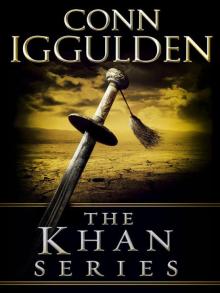 The Khan Series 5-Book Bundle
The Khan Series 5-Book Bundle Tollins 2: Dynamite Tales
Tollins 2: Dynamite Tales Tollins: Explosive Tales for Children
Tollins: Explosive Tales for Children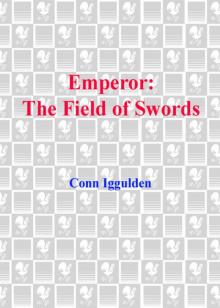 The Field of Swords
The Field of Swords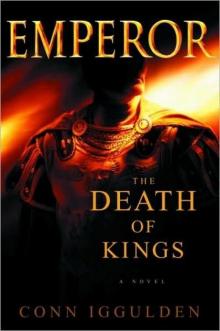 The Death of Kings
The Death of Kings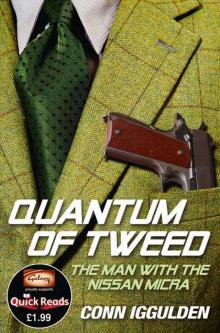 Quantum of Tweed: The Man With the Nissan Micra
Quantum of Tweed: The Man With the Nissan Micra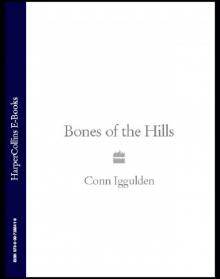 Bones of the Hills
Bones of the Hills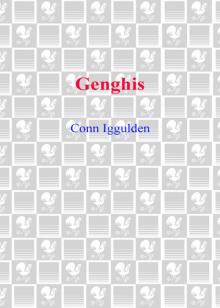 Genghis: Birth of an Empire
Genghis: Birth of an Empire The Gates of Rome
The Gates of Rome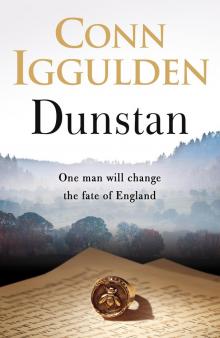 Dunstan
Dunstan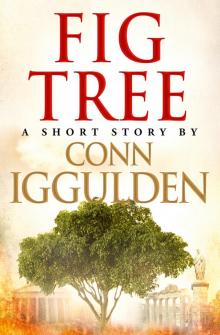 Fig Tree
Fig Tree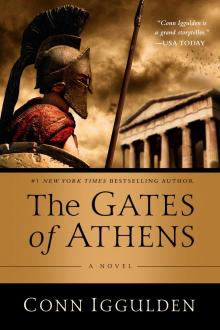 The Gates of Athens
The Gates of Athens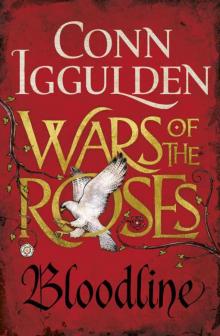 Stormbird
Stormbird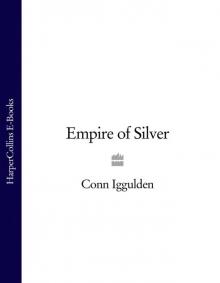 Khan: Empire of Silver
Khan: Empire of Silver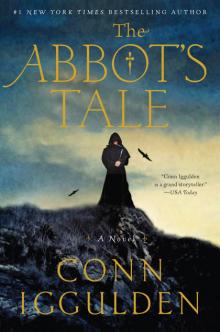 The Abbot's Tale
The Abbot's Tale Gengis: Lords of the Bow
Gengis: Lords of the Bow The Gods of War
The Gods of War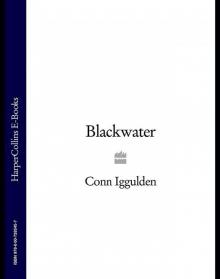 Blackwater
Blackwater Ravenspur: Rise of the Tudors
Ravenspur: Rise of the Tudors Wars of the Roses: Trinity (War of the Roses Book 2)
Wars of the Roses: Trinity (War of the Roses Book 2)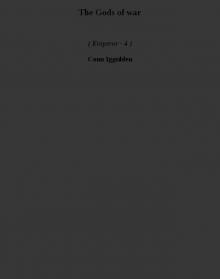 The Gods of war e-4
The Gods of war e-4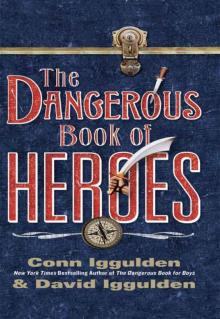 The Dangerous Book of Heroes
The Dangerous Book of Heroes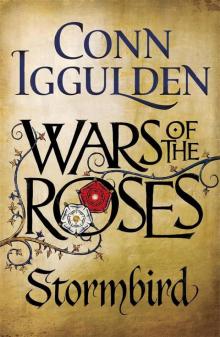 Stormbird wotr-1
Stormbird wotr-1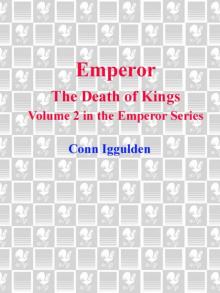 Emperor: The Death of Kings
Emperor: The Death of Kings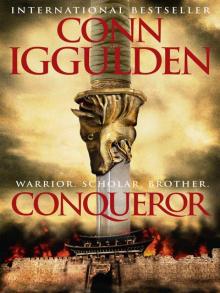 Conqueror (2011) c-5
Conqueror (2011) c-5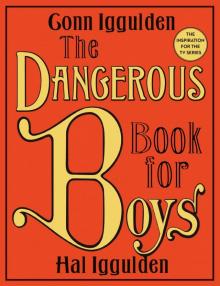 The Dangerous Book for Boys
The Dangerous Book for Boys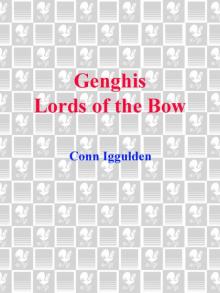 Genghis Lords of the Bow
Genghis Lords of the Bow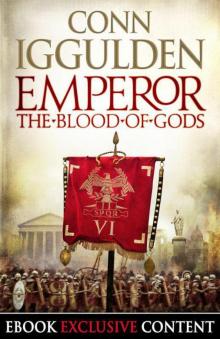 Emperor: The Blood of Gods (Special Edition) (Emperor Series, Book 5)
Emperor: The Blood of Gods (Special Edition) (Emperor Series, Book 5)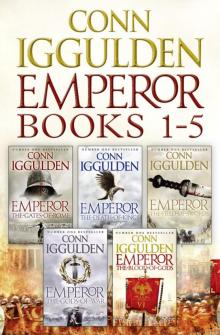 The Emperor Series: Books 1-5
The Emperor Series: Books 1-5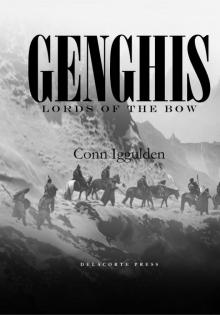 Lords of the Bow c-2
Lords of the Bow c-2 Lords of the Bow
Lords of the Bow Quantum of Tweed
Quantum of Tweed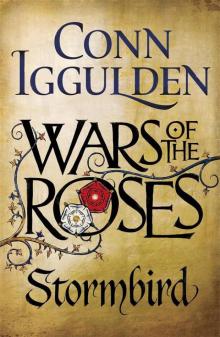 Wars of the Roses 01 - Stormbird
Wars of the Roses 01 - Stormbird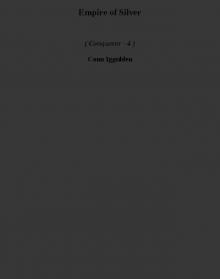 Empire of Silver c-4
Empire of Silver c-4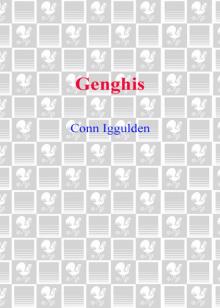 Birth of an Empire
Birth of an Empire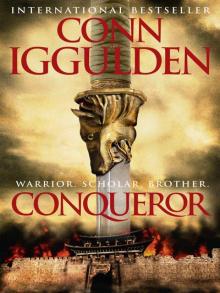 Conqueror (2011)
Conqueror (2011)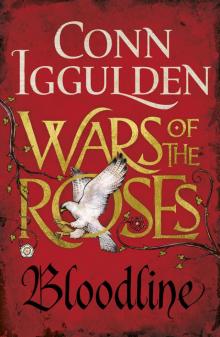 Wars of the Roses: Bloodline: Book 3 (The Wars of the Roses)
Wars of the Roses: Bloodline: Book 3 (The Wars of the Roses)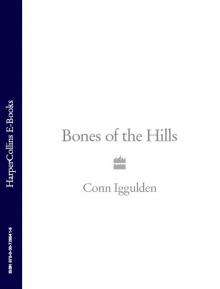 Bones Of the Hills c-3
Bones Of the Hills c-3 Empire of Silver
Empire of Silver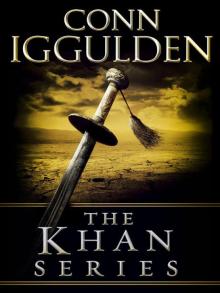 The Khan Series 5-Book Bundle: Genghis: Birth of an Empire, Genghis: Bones of the Hills, Genghis: Lords of the Bow, Khan: Empire of Silver, Conqueror
The Khan Series 5-Book Bundle: Genghis: Birth of an Empire, Genghis: Bones of the Hills, Genghis: Lords of the Bow, Khan: Empire of Silver, Conqueror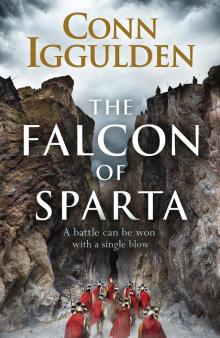 The Falcon of Sparta
The Falcon of Sparta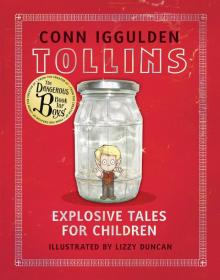 Explosive Tales for Children
Explosive Tales for Children